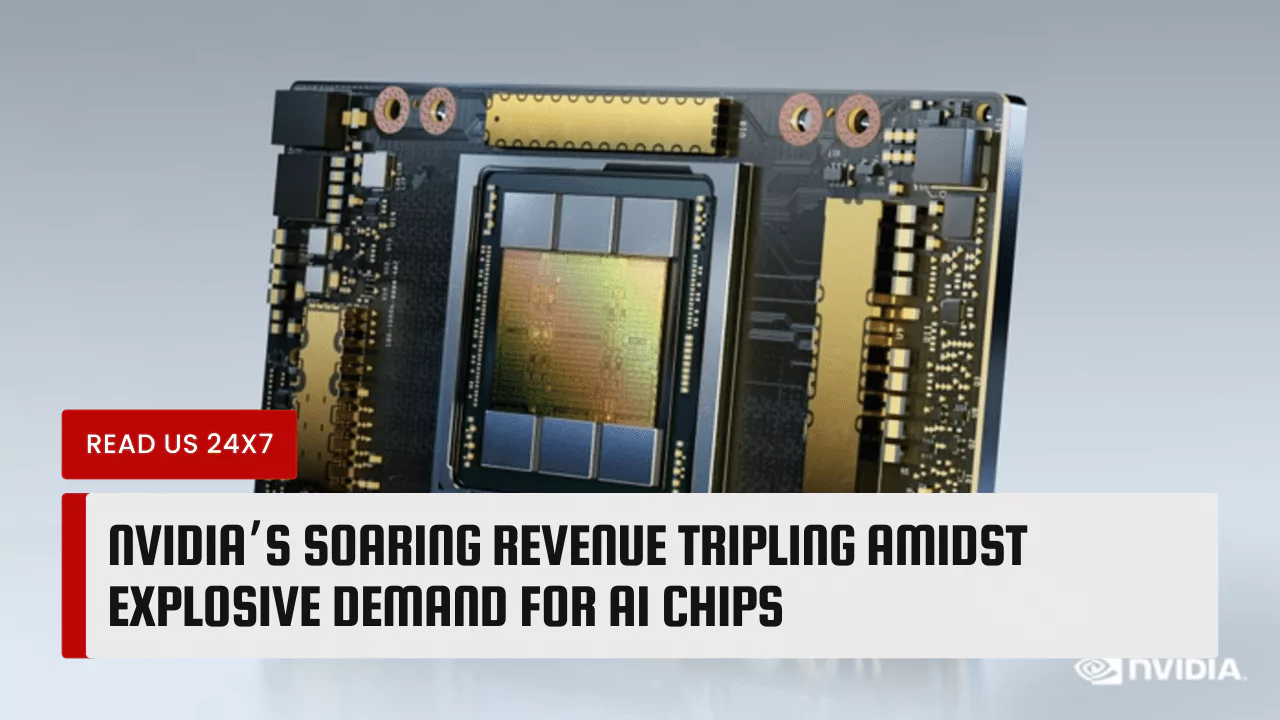Nvidia, the leading company in artificial intelligence (AI) chips, has seen its revenue more than triple in the past year, thanks to the surging demand for its products across various industries. The company expects to continue its remarkable growth in the coming quarters, despite some potential challenges in the global market.
The Rising Demand for AI Chips in the Industry
AI chips are specialized semiconductor devices that can perform complex computations and process large amounts of data at high speed and low power consumption. They are essential for running AI applications such as natural language processing, computer vision, speech recognition, and machine learning.
Nvidia’s revenue jumped to above $13.5 billion for the three months to the end of June, a 101% increase from the same period last year. The company also expects revenue of around $16 billion for the current quarter, which would be a 170% rise from a year ago.
The main driver of Nvidia’s revenue growth is its data center business, which includes AI chips. Revenue for that unit came in at more than $10.3 billion, a 171% increase from a year ago. The company’s data center products are used by cloud computing service providers and large consumer internet companies, such as Microsoft, Google, Facebook, and Amazon, to power their AI services and platforms.
AI chips are also in high demand in other industries, such as gaming, automotive, healthcare, and robotics. Nvidia’s gaming revenue reached $4.8 billion, a 92% increase from a year ago. The company’s automotive revenue grew by 37% to $201 million, as more car makers adopted its chips for autonomous driving and infotainment systems. Nvidia’s chips are also used for medical imaging, drug discovery, and genome sequencing in the healthcare sector, and for navigation, perception, and manipulation in the robotics sector.
Nvidia’s Dominance in the AI Chip Market
Nvidia has established itself as the dominant player in the AI chip market, with a 95% share of the machine learning segment. The company has a strong competitive advantage over its rivals, thanks to its technological innovation, manufacturing partnership, and market expansion.
Nvidia’s AI chips are based on its graphics processing units (GPUs), which were originally designed for rendering graphics in video games. However, the company realized that GPUs could also be used for parallel processing of large data sets, which is the core of AI applications. Nvidia has been continuously improving its GPU architecture and software to optimize its performance and efficiency for AI workloads.
Nvidia also has a strong partnership with Taiwan Semiconductor Manufacturing Company (TSMC), the world’s largest contract chip maker. TSMC produces Nvidia’s chips using its advanced fabrication technology, which enables higher transistor density, lower power consumption, and faster speed. TSMC is also investing heavily in expanding its production capacity to meet the growing demand for chips, especially from Nvidia.
Nvidia has also been expanding its market reach and customer base by acquiring or collaborating with other companies in the AI field. For example, Nvidia acquired Mellanox, a provider of high-speed networking solutions, to enhance its data center products. Nvidia also acquired Arm, a chip designer that powers most of the smartphones and tablets in the world, to extend its AI capabilities to edge devices. Nvidia also partnered with OpenAI, a research organization that developed ChatGPT, a chatbot that can generate human-like responses, to provide its AI chips and software for the project.
Projected Growth and Challenges for Nvidia
Nvidia’s future growth prospects look bright, as the demand for AI chips is expected to increase exponentially in the coming years. According to a report by Grand View Research, the global AI chip market size is projected to reach $141.82 billion by 2028, growing at a compound annual growth rate of 40.1% from 2021 to 2028.
However, Nvidia also faces some potential challenges and risks in the global market, especially in China, which is the largest consumer of chips in the world. China has been pursuing its own development of AI chips, as part of its national strategy to achieve self-reliance and technological supremacy in the field. China has also imposed restrictions on the import of certain chips from the US, in response to the US export controls that limit the access of Chinese companies to US-made chips.
Nvidia also faces competition from other chip makers, such as Intel, AMD, Qualcomm, and Huawei, who are also developing their own AI chips and solutions. Some of these competitors have advantages in terms of scale, cost, or market share in certain segments, such as CPUs, mobile devices, or cloud services. Nvidia will have to maintain its innovation and differentiation to stay ahead of its rivals.
Nvidia is undoubtedly the leader in the AI chip market and has achieved remarkable growth in the past year. The company has a strong competitive edge in terms of technology, manufacturing, and market expansion, and is well-positioned to benefit from the soaring demand for AI chips in various industries. However, the company also faces some challenges and uncertainties in the global market, especially in China, and will have to cope with the competition from other chip makers. Nvidia will have to continue its innovation and adaptation to sustain its growth and dominance in the AI field.



